How to Organize Your Pantry
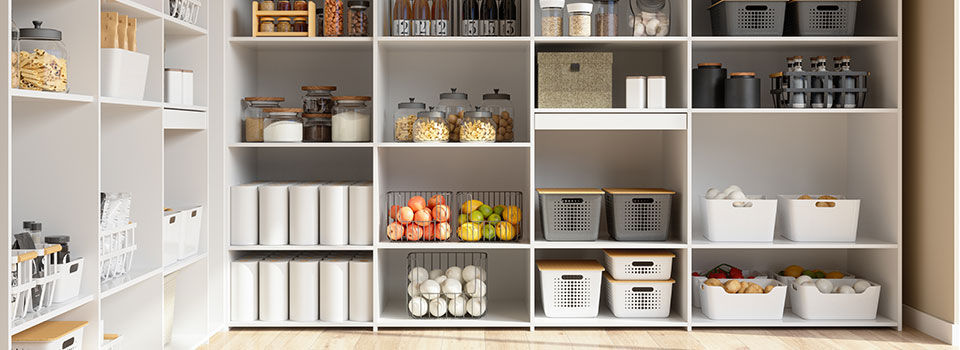
The pantry is a humble part of the kitchen that shouldn’t be overlooked. Whether you have an entire closet-like space or just a cabinet to work with, you can use it to its full storage potential with a few tips. It’s all too easy for pantries to accumulate collections of outdated, unlabeled, unwanted, and spoiled goods that clutter up the space. Wipe out what’s in there and take stock of what’s still good. Put away the odds and ends that don’t belong mixed in with dry goods storage, and then follow the tips below for an organized and efficient pantry.
Use Shelves up Top, Baskets, and Drawers Below
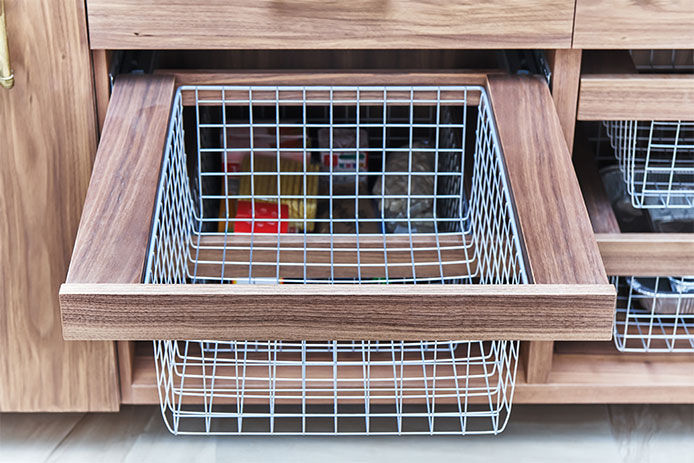
Open shelves work best above and at eye level. Especially when using open wire or grid shelving, it’s easy to glance over the boxes and bags stored on the shelves for a quick assessment of stock levels. At chest level and below, it quickly becomes harder to spot everything on an open shelf. You begin to bend over and stoop just to check for items. Try using slide-out baskets and drawers at chest level and below. Placing a single layer of items face up in these baskets allows you to quickly check each of them for the desired ingredient. It’s an ergonomically friendly way to keep big walk-in pantries easier to scan.
Keep an Inventory
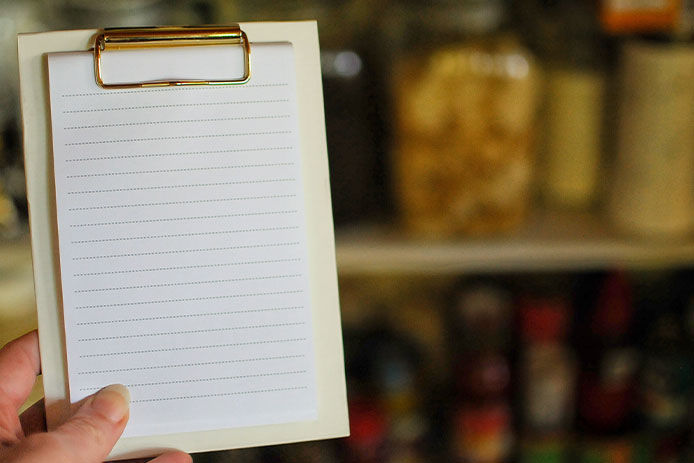
Writing down everything that goes in and out of the pantry may add some extra work to cooking, but it keeps you on top of stock levels and prepares you for making painless shopping lists. Modern options allow you to automate the task with UPC scanning apps and personal inventory software. You can also track what goes in and out with a whiteboard next to the pantry or even just a piece of paper. If writing down every bag of flour or snack pack is too much work, try just noting when a certain item needs refilling.
Add Racks, Containers, and Dividers
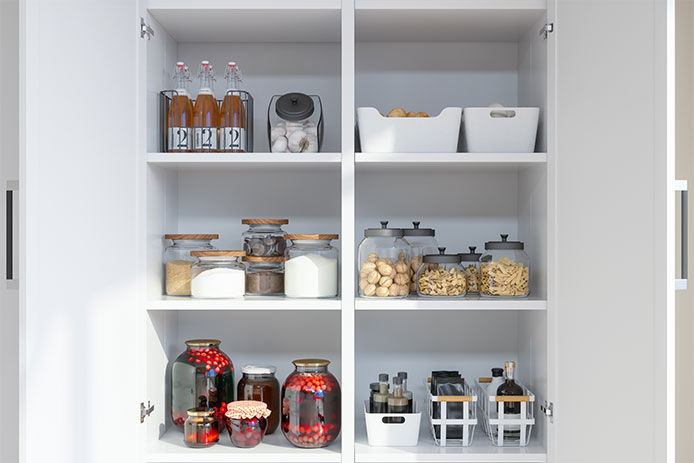
Shelves are a good start, but not all items will fit well and avoid being lost in the shuffle. For smaller jars, cans, boxes, and packets, look for containers that keep them together. Racks are great for round items like cans and jars. Clear plastic containers can hold anything, including items of different shapes that go together for instant meal kits. Dividers help designate where new supplies should be refilled so that the flour doesn’t end up mixed with the canned fruit.
Organize by Use
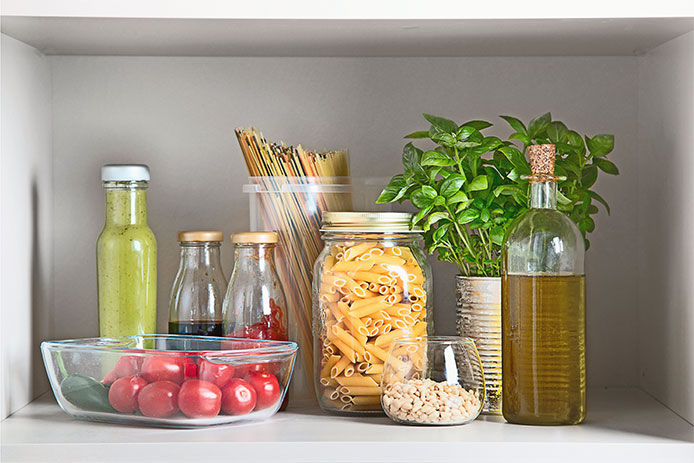
Most pantries are organized almost exclusively through the like-with-like grouping principle. Consider alternate arrangements while it’s perfectly fine to set aside one shelf for baking supplies and another for canned foods. Why not arrange items by how they’re used together, such as pasta and sauces on one shelf and canned fruit with the baking goods if you prefer cobbles to cookies? Consider your family’s habits of using the pantry to highlight the items they grab the most near the entrance.
Remember Stocking Rules
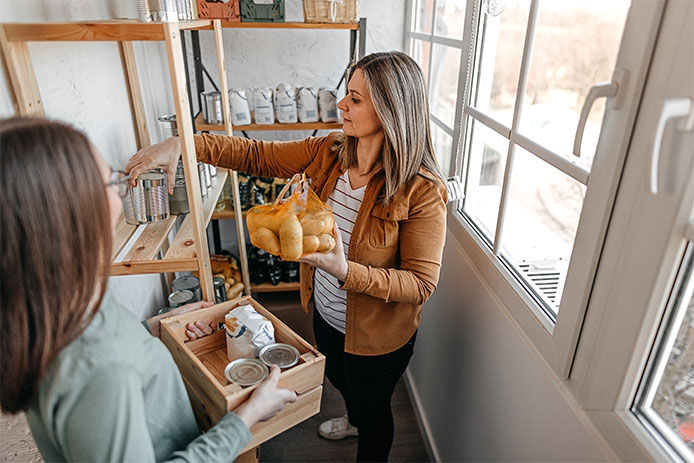
You don’t have to be trained in grocery store management to use simple stocking rules in your pantry. First, arrange items on the shelves or in containers so that the oldest items are in the front. This creates a first-in, first-out arrangement to encourage the use of items that might get forgotten. If you notice you’re overstocking on something, consider taking a few cans out of the pantry to remind you to use them up before purchasing more. Give away items that are still a few months before expiration unless you’re about to use them. It’s much more helpful to clear out the pantry early and make a food bank donation than to wait until the products are expired and send it all to the landfill instead.
Separate Certain Types of Food
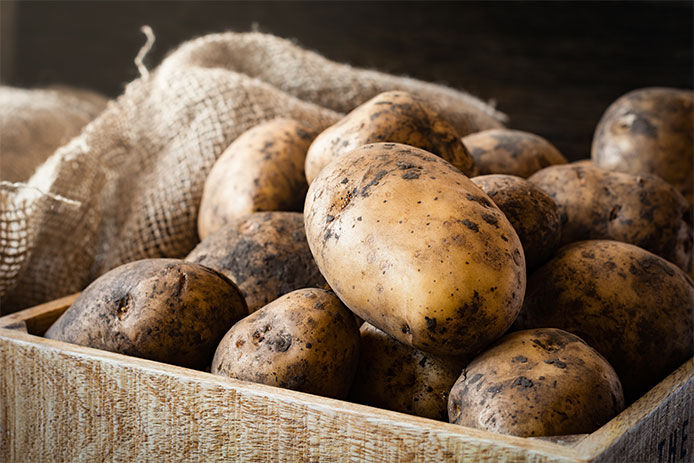
Some foods just shouldn’t share pantry space. Onions, garlic, and potatoes can all live happily in the dark, dry space of the pantry but not sharing the same shelf. You can keep the onions and garlic together, but keep both away from the potatoes to prevent spoilage. Consider the strength of the scent of a product when storing it near-neutral items like oil and flour. Even something like bananas or a flavored tea could cause off-tastes in bread or other foods stored against it.
Label Decanted Foods
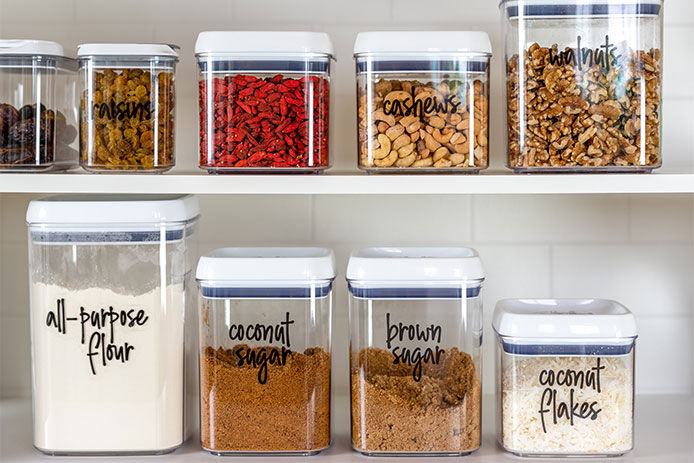
Decanting is a popular pantry management practice often recommended for the aesthetics of displaying glass jars full of dry goods. However, it’s also valuable for controlling moisture and preventing insect infestations from spreading if they do occur. Decanting is simply the process of moving dry goods like flour and beans out of their bags and into glass or plastic containers. Make sure to label the containers with not only the product’s name but its decanted date, expiration date, and suggested uses.
With these tips, keeping the pantry organized should be a matter of just checking it over once every six months or so. Taking the time to remove everything and reorganizing it should only take an hour if you have an established system in place. Just avoid overloading the pantry space, and you won’t have to worry about discovering that last box of your favorite food only after it has gone bad.
While do-it-yourself projects can be fun and fulfilling, there is always a potential for personal injury or property damage. We strongly suggest that any project beyond your abilities be left to licensed professionals such as electricians, plumbers, and carpenters. Any action you take upon the information on this website is strictly at your own risk, and we assume no responsibility or liability for the contents of this article.